The struggle for Little Mountain…and my memories of Little Norway
I spent some of my early years in emergency housing in Little Norway in Toronto (right next to the Maple Leaf Stadium). Toronto was experiencing a massive post-war housing shortage and an Emergency Housing Program was implemented, making housing available to returning veterans. It made a powerful impression on me. I remember it well, though I was only three years old when we moved in and five when we left. We lived in barracks that had been occupied during the War by personnel from the Norwegian Air Force. The site was at the front of Bathurst Street near the Lake. Some of the Stanley Barracks buildings were demolished and others converted to family housing for civilian use. Several families were living there by July 1946, when this photo of me was taken.
By August 1947, 772 people were living there, with many families with children. Lots of children! Some residents complained about unsanitary living conditions and lack of sufficient heating. Rents were $25 to $40 a month! (We paid $25.)
I remember that my mother was ashamed and fearful. Little Norway, she felt, was beneath her. She came from an upper-middle-class established family in leafy, sedate Orillia. Even a small child could sense that her mother felt she was slipping into a lower class. She wondered how and why she’d ended up in such a desperate and barren place. Her son had died at birth the year before and she was fragile and anxious. I now realise that she was chronically depressed.
My Daddy had just returned from the War. He’d been a RCAF wireless operator. He was not ashamed. He accepted his responsibility for military service (he was much too old to be drafted and had enlisted). Little Norway was, by his account, the only housing he could find during an acute city-wide housing shortage. We were eligible and he took it.
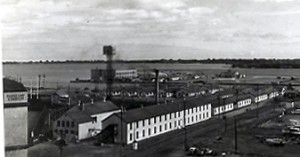
Polio
I remember living in constant terror of polio. The young boy in the next apartment had it and he was crippled by it. I had to keep my distance from him. The hygiene of the shared bathrooms that were only occasionally cleaned also frightened my mother. She was often frightened and anxious for my health and safety. Our stay at Little Norway was short — not more than two years. And in just over three years, I had a baby sister and we were living in a brand new house in Vancouver!
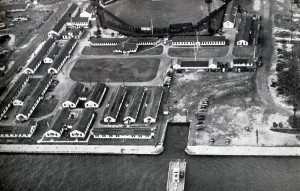
Little Norway Park
Little Norway housing is no more.
There’s a waterfront park where our housing once stood. See: https://www.yelp.com.au/biz/little-norway-park-toronto
It does not feel right to me to find a park there when I visit in 2006 but I guess it’s progress. And cities always need parks. They were barracks, after all, not really permanent housing for families. But to me, as a small child, it was “home”.
I remember picking mushrooms in the neighbouring Coronation Park with my grandmother and marveling at how she could discern between an edible mushroom and a toadstool.
Little Norway was fine with me and I was fine with Little Norway. To me, it was big, not little. It had a big impact on my life.
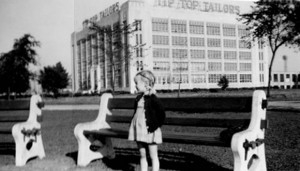
I am certain that this early exposure to the fear and stigma of housing for disadvantaged people made a profound impact on me and sensitised me to important social housing issues.
Here are some of my drawings, based on my memories (and one photo).
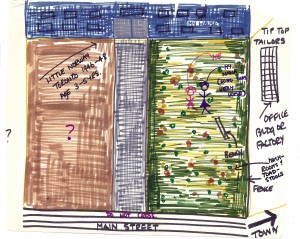
From Little Norway to Little Mountain
You can see that it’s not surprising that I’m a strong supporter of Vancouver documentary filmmaker, David Vaisbord, who is giving everything he has to tell the compelling story of the Little Mountain
housing project in Vancouver.
Indiegogo crowdfunding campaign
David Vaisbord has launched an Indiegogo crowdfunding campaign to help complete a documentary that has been six years in the making.
See: https://www.indiegogo.com/projects/little-mountain-film/x/3510216
David’s story is a poignant one. Little Mountain is not a little story either. It’s a huge story and one we all need to know about. Understand. And share.
Had I been living in Toronto when Little Norway housing was bulldozed to make way for private housing and a public park, I’d have been seeking a heart-present filmmaker like David to help with the activist project of saving — or at least documenting — this precious gem of Toronto’s history.
Maybe more than just documentation could have been the outcome. As is the case with Little Mountain.
David Vaisbord’s project
David’s project has resulted in much more than documentation. That’s the magic of it.
David’s story of Little Mountain goes like this. When the British Columbia government began tearing down the buildings at Vancouver’s oldest social housing complex, they had evicted everyone except three families, which refused to leave: a woman and her aged mother, two blind senior citizens, and a pensioner and her cat. Together with the immense support of their community, the residents won the right to stay in the last row house on Little Mountain until new housing was built.
Summer time at Little Mountain
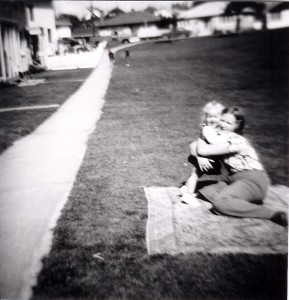
The action by the residents of Little Mountain and the community had a powerful impact that resonates today around the work. Their activism – supported by the documentary filmmaker — resulted in changes to Vancouver’s municipal bylaws.
Finally, when the British Columbia Government tried a second time to evict the last tenants, the residents and their supporters staged an even stronger fight. And, with the help of their community, they brought a final defeat to the eviction process.
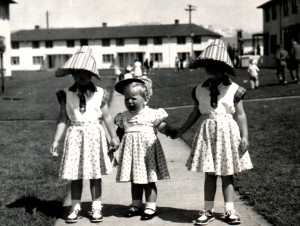
New housing
As a direct result of their courage and resolve, 54 units of NEW SOCIAL HOUSING for senior citizens are being completed on the site.
It’s the only new housing to be built on the 16-acre site. It’s a triumph of community activism and it’s a story that needs to be told around the world.
We all need to hear about examples of “the study of success”, as Australian urbanist High Stretton called it, to keep our activist fires alight.
Vaisbord’s documentary will be complete once the former tenants move out of the last row house and into their new building.
I am eager to support this important project because there’s an inspiring and compelling story to be told about how a government was taught an important lesson about ethics and compassion at the hands of its most vulnerable citizens.
David Vaisbord is hoping to raise $50,000.
The money will go towards shooting final scenes, interviews, editing, and post-production.
David is offering perks that range from a precious ounce of Ground Social Housing, to a day-long workshop in hyperlocal documentary filmmaking, to an invitation to a personal dinner prior to the film’s premiere.
Are you able to support his important project? If you are, please visit his site before June 23rd, the closing date of the campaign!
For more information
See: The Little Mountain Film: https://www.littlemountainfilm.com/ for more information and a link to the four-minute trailer on the campaign site.
Additional information can be found on the campaign’s Facebook site at: https://www.facebook.com/LittleMountainFilm
Contact David directly
Or contact David directly at his gmail account: vaisbord@gmail.com
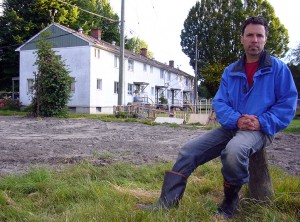
With all my heart I believe that this is a project worth supporting.
All of us who value public housing — and housing security generally — should cheer on this brilliant community-led initiative. And support David’s important documentary film.
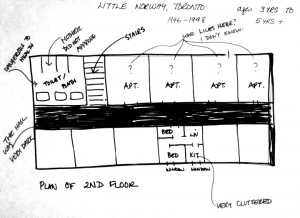
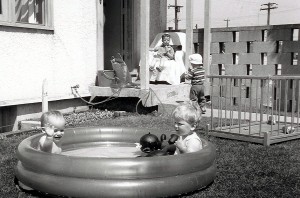
Loved this story, and the courage of the last tenants at Little Mountain to fight eviction. I will gladly do my bit to support David’s film that will bring this story to many more people.
Unlike Wendy, I do not remember anything from before the age of 5, when -in my case – I was evacuated from the London blitz to the country with my mother and brother. There for 5 years we lived in lived in small house looking onto a courtyard used for exercising horses, and where we children also played. I have no doubt that this early experience set me up as a lifelong proponent of housing clustered around shared outdoor space, supporting the needs of children and their care-givers.